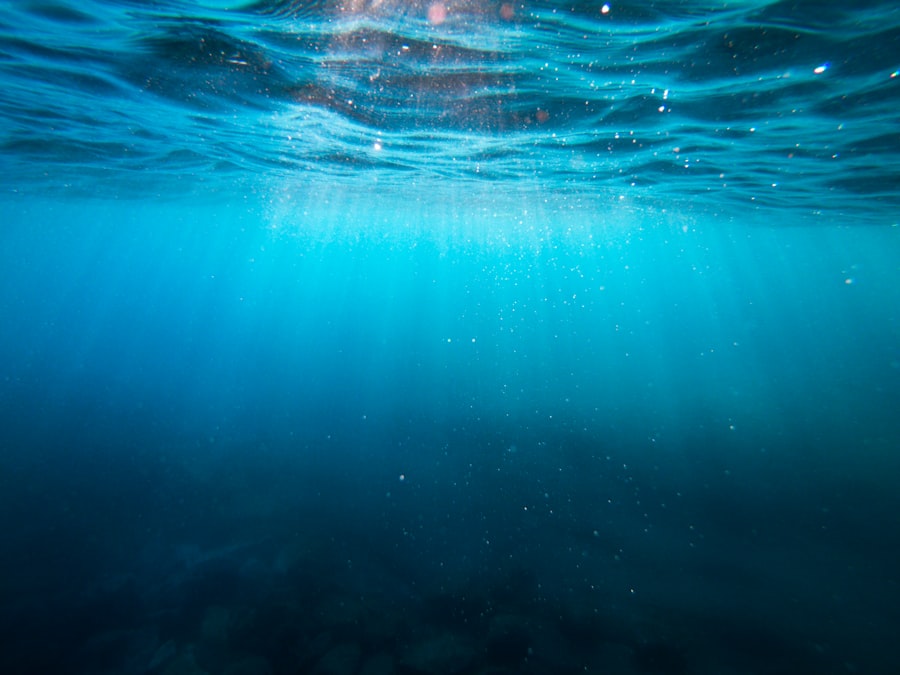Download links
How to install Exploring the Shallow Seas: A Beginner's Guide to Diving APK?
1. Tap the downloaded Exploring the Shallow Seas: A Beginner's Guide to Diving APK file.
2. Touch install.
3. Follow the steps on the screen.
Description
Diving is an exhilarating activity that allows individuals to explore the underwater world, offering a unique perspective on marine ecosystems. At its core, diving involves descending into water, typically using specialized equipment to breathe and navigate. The two primary types of diving are scuba diving and free diving.
Scuba diving utilizes a self-contained underwater breathing apparatus, allowing divers to stay submerged for extended periods. In contrast, free diving relies solely on the diver’s ability to hold their breath, making it a more physically demanding and skill-oriented practice. The fundamentals of diving encompass various aspects, including buoyancy control, equalization techniques, and understanding the physiological effects of pressure on the body.
Buoyancy control is crucial for maintaining a stable position in the water column, allowing divers to ascend or descend as needed. Equalization is necessary to prevent discomfort or injury to the ears and sinuses due to changes in pressure as one descends. Additionally, divers must be aware of the risks associated with diving, such as decompression sickness and nitrogen narcosis, which can occur at greater depths.
Understanding these basics is essential for anyone looking to embark on a diving adventure, particularly in shallow waters where many beginners start their journey.
Key Takeaways
- Diving involves exploring underwater environments using specialized equipment and techniques.
- When choosing equipment for shallow water diving, consider factors such as buoyancy control and visibility.
- Safety precautions for shallow water diving include proper training, checking equipment, and monitoring air supply.
- Shallow seas are home to a diverse range of marine life, including colorful fish, corals, and other fascinating creatures.
- Some of the best shallow water diving locations around the world include the Great Barrier Reef, the Red Sea, and the Maldives.
Choosing the Right Equipment for Shallow Water Diving
Essential Visual Aids
The most fundamental piece of equipment is the mask, which allows divers to see clearly underwater.
Breathing and Mobility Aids
Additionally, snorkels are often used in shallow water diving, enabling divers to breathe while floating on the surface without using their air supply. Fins are another essential component of diving gear, as they facilitate movement through the water. For shallow water diving, open-heel fins are popular because they can be worn with booties, providing extra comfort and protection.
Protective Gear and Safety Devices
Wetsuits or rash guards are also recommended for shallow dives, as they offer thermal protection and shield against sun exposure and potential stings from marine life.
Finally, a dive computer or depth gauge is important for monitoring depth and time spent underwater, helping divers avoid potential hazards associated with prolonged exposure to pressure.
Safety Precautions and Tips for Shallow Water Diving

Safety should always be a top priority when engaging in shallow water diving. One of the most critical precautions is to dive with a buddy. Having a partner not only enhances safety but also enriches the experience through shared exploration and support.
Before entering the water, divers should conduct a thorough pre-dive safety check, ensuring that all equipment is functioning correctly and that both divers are familiar with their gear. Another essential safety measure is to be aware of local conditions, including currents, tides, and weather patterns. Shallow waters can still present challenges such as strong currents or sudden changes in visibility due to weather conditions or plankton blooms.
Divers should also be mindful of their physical limits and avoid pushing themselves beyond their comfort zone. Staying hydrated and avoiding alcohol before diving can significantly reduce the risk of accidents or health issues while underwater. Additionally, divers should familiarize themselves with emergency procedures and have a plan in place for potential situations such as equipment failure or getting separated from their buddy.
Exploring Marine Life in Shallow Seas
| Species | Number of Species | Depth Range (meters) |
|---|---|---|
| Corals | Over 8000 | 0-40 |
| Seagrass | Over 60 species | 0-30 |
| Sea Urchins | Over 950 species | 0-100 |
| Clownfish | Over 30 species | 0-15 |
Shallow water diving offers an incredible opportunity to observe diverse marine life in their natural habitats. Coral reefs, seagrass beds, and rocky shorelines are teeming with various species that thrive in these environments. Coral reefs are often referred to as the “rainforests of the sea” due to their rich biodiversity.
They provide shelter and food for countless marine organisms, including colorful fish, crustaceans, and mollusks. Divers can witness vibrant coral formations while encountering species such as clownfish, parrotfish, and sea turtles. Seagrass beds are another vital ecosystem found in shallow waters, serving as nurseries for many fish species and providing habitat for invertebrates like seahorses and starfish.
These underwater meadows play a crucial role in maintaining water quality by stabilizing sediments and absorbing excess nutrients. Exploring these areas can reveal fascinating interactions between species, such as symbiotic relationships between cleaner fish and larger fish that seek grooming services. The opportunity to observe these interactions firsthand adds depth to the diving experience and fosters a greater appreciation for marine ecosystems.
Best Shallow Water Diving Locations Around the World
Numerous locations around the globe are renowned for their exceptional shallow water diving experiences. The Great Barrier Reef in Australia stands out as one of the most iconic destinations for divers seeking vibrant coral reefs and diverse marine life. With its extensive network of shallow reefs, it offers opportunities for both novice and experienced divers to explore stunning underwater landscapes filled with colorful fish and unique coral formations.
Another remarkable location is the Red Sea in Egypt, known for its crystal-clear waters and abundant marine biodiversity. Sites like Ras Mohammed National Park provide shallow dive spots where divers can encounter everything from vibrant coral gardens to large pelagic species such as dolphins and sharks. The warm waters of the Red Sea make it an ideal destination year-round.
In the Caribbean, places like Cozumel in Mexico offer incredible shallow diving experiences with easy access to vibrant reefs teeming with life. The clear waters allow for excellent visibility, making it a favorite among divers looking to capture stunning underwater photographs. Similarly, Bonaire is celebrated for its commitment to marine conservation and offers numerous shore diving opportunities in shallow waters where divers can explore pristine reefs at their own pace.
Conservation and Environmental Awareness in Shallow Water Diving

As divers explore the beauty of shallow water ecosystems, it becomes increasingly important to foster conservation efforts and environmental awareness. The delicate balance of marine ecosystems can be easily disrupted by human activities such as overfishing, pollution, and climate change. Divers have a unique opportunity to advocate for marine conservation by practicing responsible diving techniques that minimize their impact on fragile environments.
One effective way to promote conservation is by participating in organized clean-up dives or citizen science projects that contribute valuable data to researchers studying marine ecosystems. These initiatives not only help protect marine life but also raise awareness about environmental issues affecting oceans worldwide. Divers can also adopt practices such as avoiding contact with coral reefs, refraining from collecting marine souvenirs, and using reef-safe sunscreen to protect sensitive habitats from harmful chemicals.
Education plays a crucial role in fostering environmental awareness among divers. Many dive shops and organizations offer courses on marine ecology and conservation practices that equip divers with knowledge about the ecosystems they explore. By understanding the importance of biodiversity and the threats facing marine environments, divers can become advocates for change within their communities and contribute to global efforts aimed at preserving our oceans for future generations.
FAQs
What is shallow sea diving?
Shallow sea diving refers to the activity of diving in relatively shallow waters, typically up to 40 feet deep. It is popular among beginner and intermediate divers due to the shallower depths and generally calmer conditions.
What are the benefits of shallow sea diving?
Shallow sea diving allows divers to explore vibrant marine life, colorful coral reefs, and underwater landscapes without the need for advanced diving certifications or specialized equipment. It also provides an opportunity for divers to improve their skills and build confidence in a controlled environment.
What marine life can be found during shallow sea diving?
During shallow sea diving, divers can encounter a variety of marine life including tropical fish, sea turtles, rays, eels, and a diverse range of invertebrates. Coral reefs in shallow waters are often teeming with life, making for an exciting and visually stunning diving experience.
What safety precautions should be taken for shallow sea diving?
Safety precautions for shallow sea diving include proper training and certification, checking equipment for proper functioning, diving with a buddy, monitoring depth and air supply, and being aware of potential hazards such as currents and marine life. It is important to follow established diving guidelines and procedures to ensure a safe and enjoyable experience.
What equipment is needed for shallow sea diving?
Basic equipment for shallow sea diving includes a mask, snorkel, fins, wetsuit or rash guard, buoyancy control device (BCD), regulator, and a dive computer or depth gauge. Depending on the specific dive site and conditions, additional equipment such as a dive light or underwater camera may also be used.





